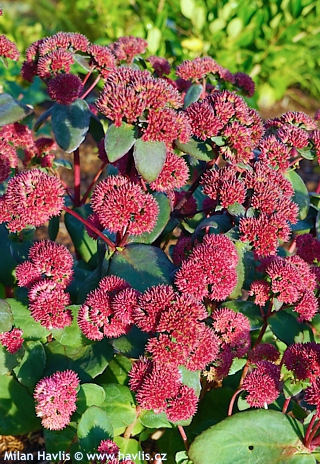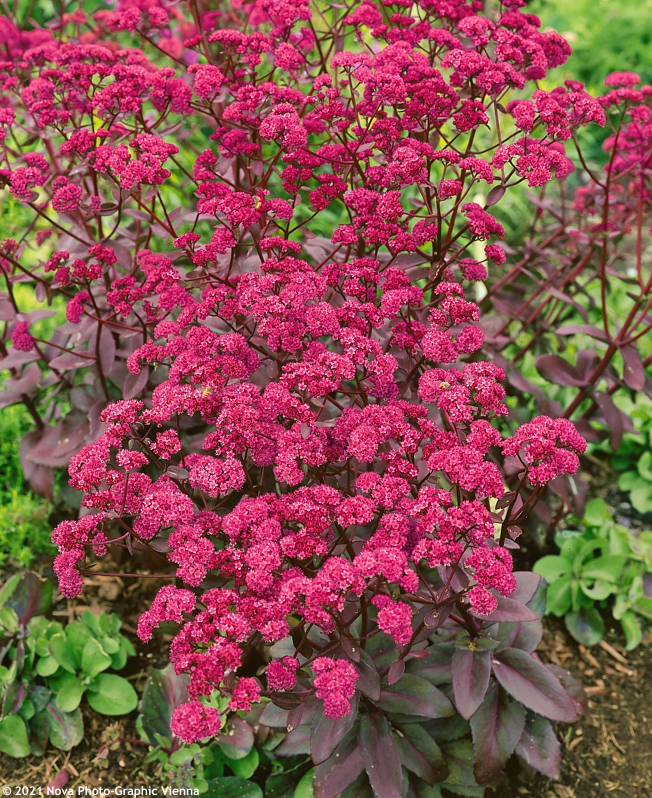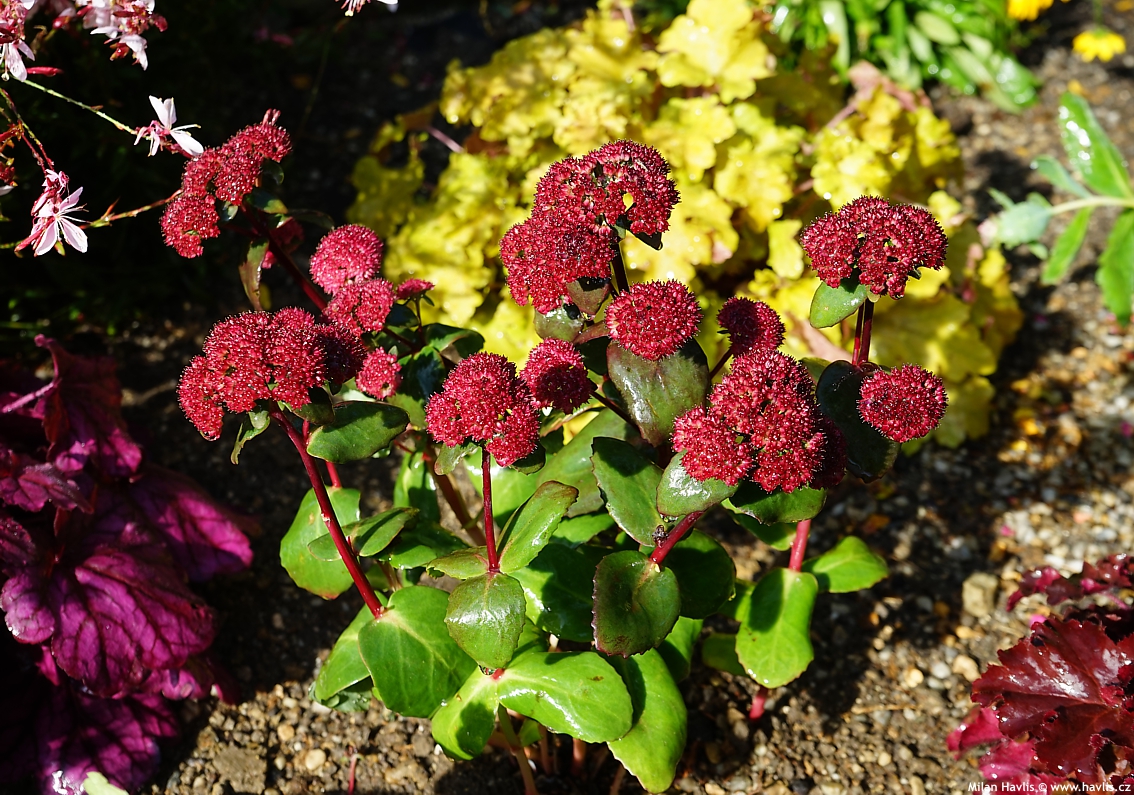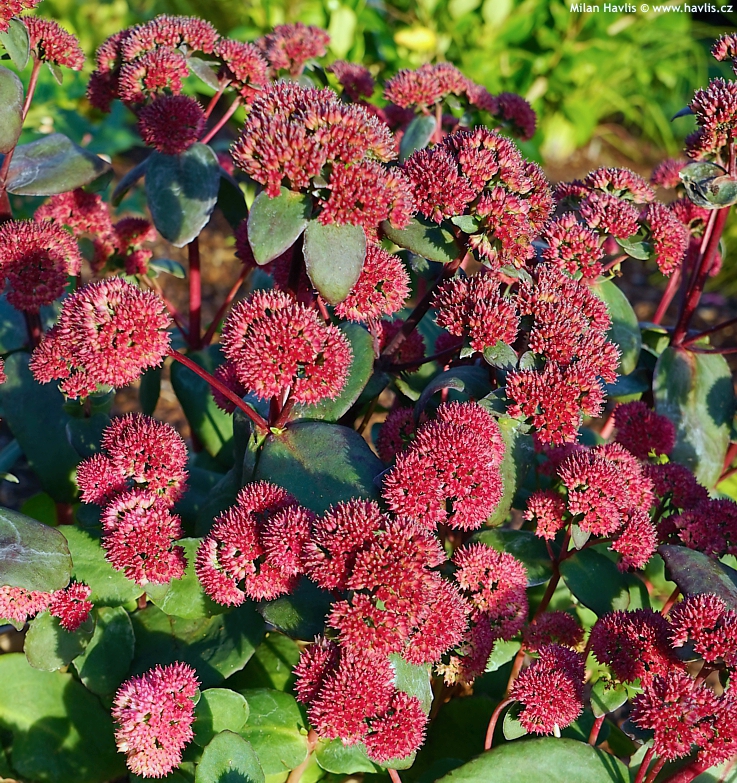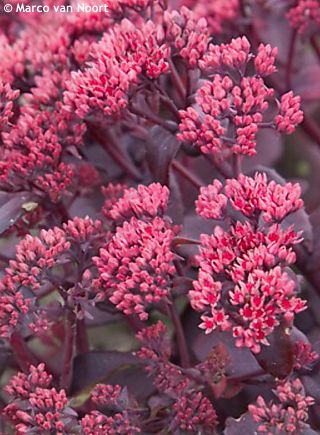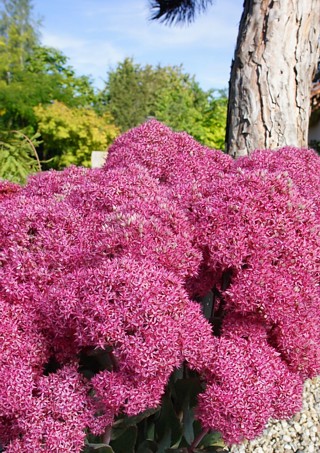Sedum (hylotelephium) 'RED CAULI' stonecrop, iceplant
size/type
low perennial,mid-sized perennial
usual height
0,2-0,3m
usual width
0,3-0,4m
leaves
deciduous broadleaf
colour of leaves
flowers
showy
colour of flowers
blooming time
August-October
location
full sun
soil type
any (acidic to alkaline)
soil moisture requirements
dry and sharply drained (xeriscape)
USDA zone (lowest)
3 (down to -40°C)
winter protection
for zone 5+6

for zone 7

categorized
Sedum
Stonecrops (ice plants) are variable and usually very tough perennials popular for their zero requirements for water and maintenance. Most of our C.E. cultivated hardy species and varieties are best grown in xeriscape conditions and offer a good range of foliage and flower colours. In order to separate the taller ones with stems from the groundcovering species, botanists and growers prefer to use hylotelephium for the taller ones.Description of the plant:
Red Cauli is a Dutch addition to the family of upright growing stonecrops and I love it. Why, you may ask, when it makes smaller flowers heads than many modern varieties? Well, perhaps just because of that – don’t you think that the new sedums and their extra-large inflorescence look like flying saucers? I am not a fan of sedum on steroids, I prefer a regular guy. And obviously its rich colour. Red Cauli stonecrop makes the most striking rich ruby red flowers I have ever seen on a hylotelephium. The stems are deep maroon, and deciduous leaves are thick, broadly elliptic to oval, not very long, deep green, and flushed purple. The inflorescence is a terminal, dome-shaped, 6-8 cm wide corymbs, composed of small flowers which attract bees and provide them with plenty of food, especially in early fall when there is not much nectar in the landscape. Flowering begins in the second half of August and as the flowers become dry they remain attractive till the first soft rime.
As every upright sedum it looks best planted in a mass or at least three plants together for a richer display of its flowers. Red Cauli was introduced by Future Plants and awarded AGM by RHS in 2006.
Stonecrops are perfect plants for autumn borders. They provide an extra colour on plant of architectural value. These perennials are easy to grow, they will like almost any well-drained soil, they do well in rockeries and outdoor pots (without a saucer). Cut them back in early spring but be careful not to damage young buds at the ground which are frequently formed yet before winter and overwinter until springtime. Let them dry out before next watering - excess water brings a danger of fungi diseases. Fully hardy to min. -34 °C (USDA zone 4).
Last update 20-09-2019; 03-10-2021

































